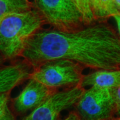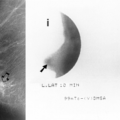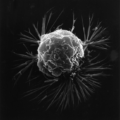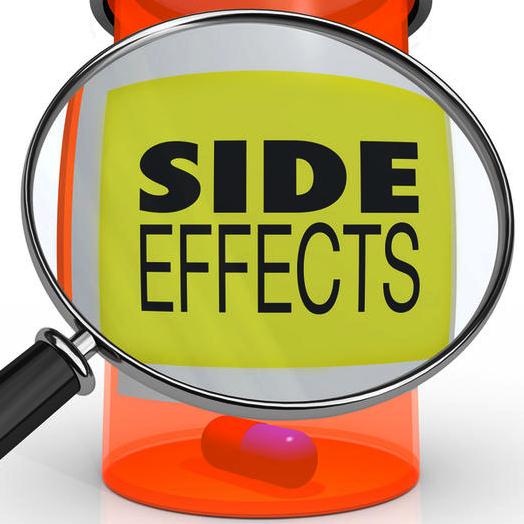Estrogen receptor positive (ER+) cancers account for approximately 75% of all breast cancers. In ER+ the cancers respond to the presence or absence of estrogens (estrone, estradiol). Almost 65% of ER+ cancers are also progesterone receptor positive (PR+) meaning the cancer also responds to presence or absence of progesterone. In contrast, the HER2 strain of cancers involves an over production of the protein epidermal growth factor. HER2+ cancers are not amenable to hormone treatments and have not been linked to hormone levels, until recently.
A study published in Cancer Epidemiology Biomarkers and Prevention (Sieri et al. 2009) found that high circulating levels of testosterone were associated with an increased risk of breast cancer in menopausal women. The association was strongest for ER+ cancers, but was also present ER- cancers such as the HER2 strain. Though the association between testosterone and HER2+ cancers was not as strong as observed in the ER+ cancers, it was significant and merits additional research.
The role of androgens in breast cancer is controversial and there are differences between the hormone levels locally in the breast tissue versus those in circulation. Nevertheless, this study suggests that broader research, diagnostic and potentially treatment approach may be warranted.
To read this study go to: (Cancer Epidemiol Biomarkers Prev 2009;18 (1):169–76).














Hi!
Can Testosterone vaginal will increase the risk of cancer recurrence with ER+? Thank you in advance!
Good article! One question, please: In ER+ do the cancers respond to the presence or absence of estriol (E3). Thank you.
I don’t know the answer, but I would suspect they do b/c estriol binds to the estrogen receptors like estradiol. The transduction pathway may be a little different though, I would have to look it up. They may also bind to other receptors to compensate in some way. Hormones are quick promiscuous and often bind to a whole bunch of different receptors to balance and manage their effects.